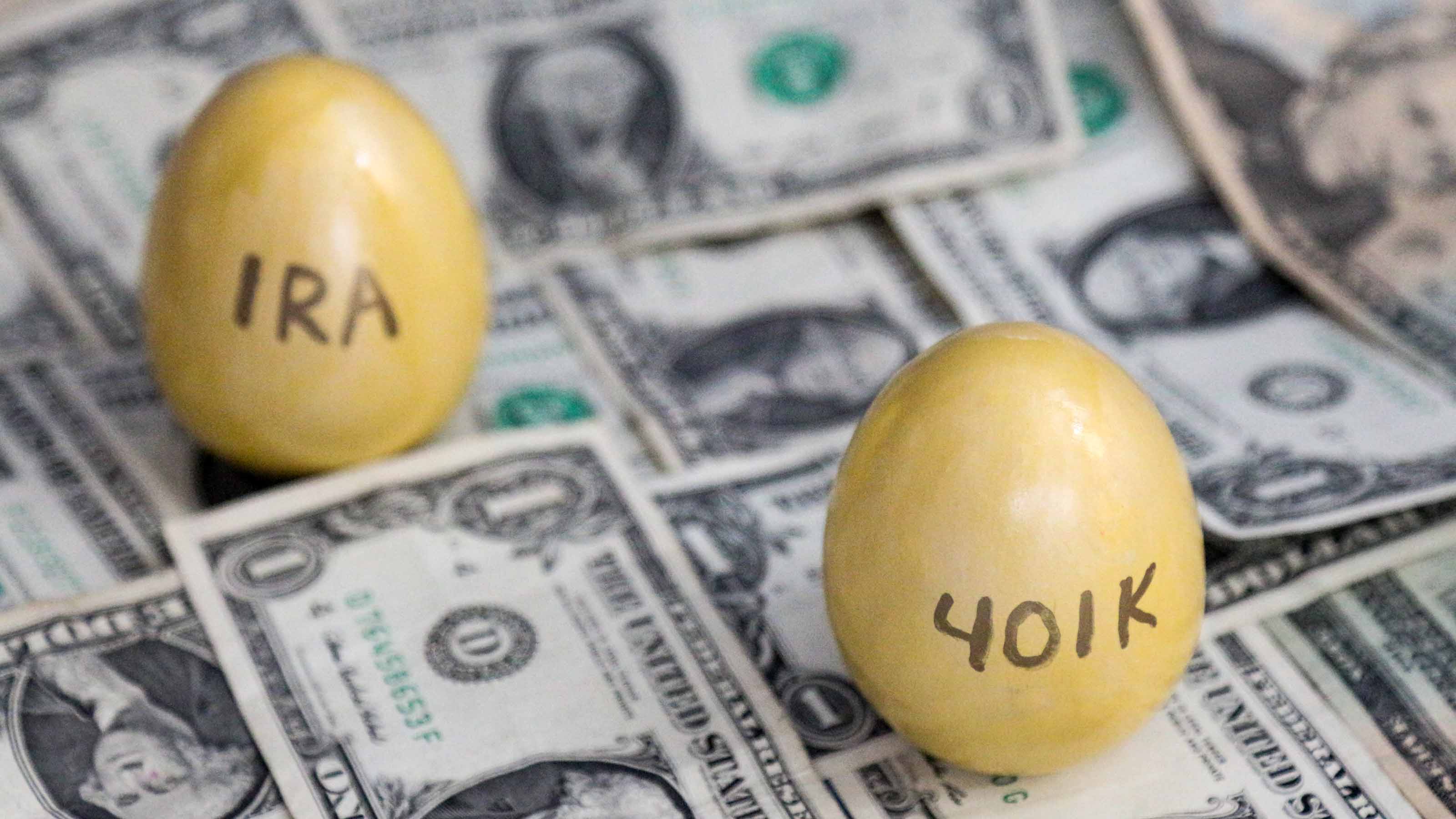Retirement Plan Contribution Limits for 2016
Low inflation is keeping the contribution and income limits mostly the same as in 2015.

How much can I contribute to my IRA and 401(k) in 2016? Are the income limits for Roth IRAs going to increase?
Take Our Quiz: Are You Saving Enough for Retirement?
The contribution amount will not increase in 2016 because the increase in the cost-of-living index did not meet the thresholds that trigger an adjustment. The maximum you can contribute to a 401(k), 403(b), most 457 plans and the federal government's Thrift Savings Plan will remain at $18,000. The catch-up contribution will remain the same, too – you can contribute an extra $6,000 if you’ll be 50 or older anytime in 2016.
IRA maximum contributions aren’t changing, either. You will be able to contribute up to $5,500 to an IRA in 2016, plus an extra $1,000 if you're 50 or older.
From just $107.88 $24.99 for Kiplinger Personal Finance
Become a smarter, better informed investor. Subscribe from just $107.88 $24.99, plus get up to 4 Special Issues

Sign up for Kiplinger’s Free Newsletters
Profit and prosper with the best of expert advice on investing, taxes, retirement, personal finance and more - straight to your e-mail.
Profit and prosper with the best of expert advice - straight to your e-mail.
The Roth IRA income limits will be $1,000 higher than in 2015. You’ll be able to contribute the full amount to a Roth IRA in 2016 if your adjusted gross income is less than $184,000 if you’re married filing taxes jointly; the contribution amount will phase out completely if you earn more than $194,000. Singles will be able to contribute the full amount if their income is below $117,000 in 2016; the contribution amount will phase out completely if they earn more than $132,000.
The income limits to qualify for the retirement saver’s credit will also increase slightly. To be eligible for the credit, your income must be less than $61,500 if married filing jointly (up from $61,000 in 2015), or $46,125 for a head of household (up from $45,750) or $30,700 if you're single (up from $30,500). This credit is worth 10%, 20% or 50% of the first $2,000 you contribute to an IRA, 401(k) or other retirement-savings plan (the higher your income, the lower the percentage). See How to Maximize the Retirement Saver's Tax Credit for more information about this credit.
| Contribution Limits | ||
|---|---|---|
| Row 0 - Cell 0 | 2015 | 2016 |
| 401(k), 403(b), 457, Thrift Savings Plan contributions (not including employer contributions) | $18,000 | $18,000 |
| 401(k), 403(b), 457, Thrift Savings Plan catch-up contributions (for workers 50+) | $6,000 | $6,000 |
| IRA and Roth IRA contributions | $5,500 | $5,500 |
| IRA and Roth IRA catch-up contributions (for workers 50+) | $1,000 | $1,000 |
| Solo 401(k) | $53,000 | $53,000 |
| Solo 401(k) catch-up contributions (for workers 50+) | $6,000 | $6,000 |
| Simplified Employee Pension | $53,000 | $53,000 |
| Income Limits | ||
|---|---|---|
| Row 0 - Cell 0 | 2015 | 2016 |
| Roth IRA, married filing jointly | $193,000 | $194,000 |
| Roth IRA, singles | $131,000 | $132,000 |
| Retirement savers' credit, married filing jointly | $61,000 | $61,500 |
| Retirement savers' credit, head of household | $45,750 | $46,125 |
| Retirement savers' credit, single or married filing separately | $30,500 | $30,700 |
See Our Slide Show: 6 Savvy Moves to Stretch Your Retirement Savings
Profit and prosper with the best of Kiplinger's advice on investing, taxes, retirement, personal finance and much more. Delivered daily. Enter your email in the box and click Sign Me Up.

As the "Ask Kim" columnist for Kiplinger's Personal Finance, Lankford receives hundreds of personal finance questions from readers every month. She is the author of Rescue Your Financial Life (McGraw-Hill, 2003), The Insurance Maze: How You Can Save Money on Insurance -- and Still Get the Coverage You Need (Kaplan, 2006), Kiplinger's Ask Kim for Money Smart Solutions (Kaplan, 2007) and The Kiplinger/BBB Personal Finance Guide for Military Families. She is frequently featured as a financial expert on television and radio, including NBC's Today Show, CNN, CNBC and National Public Radio.
-
 Holiday Tax Scams: 'Tis the Season to be Wary
Holiday Tax Scams: 'Tis the Season to be WaryTax Scams Navigating tax tricks of the holiday season may be daunting, but don't let that destroy your festive spirit
-
 Metro by T-Mobile Is Giving Away This Samsung Galaxy A16: Which Plans Are Eligible?
Metro by T-Mobile Is Giving Away This Samsung Galaxy A16: Which Plans Are Eligible?Metro by T-Mobile is offering free Samsung Galaxy A16 phones on eligible plans right now. Here’s how the deal works.
-
 I Drive and Collect Classic Cars: Here’s How I Got Started
I Drive and Collect Classic Cars: Here’s How I Got StartedAre classic cars a hobby or an investment strategy — or both? Either way, the vintage car scene is much cooler and more affordable than you think.
-
 457 Plan Contribution Limits for 2026
457 Plan Contribution Limits for 2026Retirement plans There are higher 457 plan contribution limits in 2026. That's good news for state and local government employees.
-
 457 Contribution Limits for 2024
457 Contribution Limits for 2024retirement plans State and local government workers can contribute more to their 457 plans in 2024 than in 2023.
-
 Catch-Up Contributions to Retirement Accounts Boosted By SECURE Act 2.0
Catch-Up Contributions to Retirement Accounts Boosted By SECURE Act 2.0Americans approaching retirement age can now squirrel away more money in IRAs, 401(k)s, and other retirement accounts.
-
 Getting Ready for Retirement? We Explain Key Elements and Options
Getting Ready for Retirement? We Explain Key Elements and OptionsRetirement savings are just one component of your financial profile once you hit your golden years.
-
 When RMDs Loom Large, QCDs Offer a Gratifying Tax Break
When RMDs Loom Large, QCDs Offer a Gratifying Tax BreakSend money directly to charity from your traditional IRA, and you won’t owe taxes on the amount you donate. It’s a win-win!
-
 Save More for Retirement in 2023 Thanks to Higher IRA and 401(k) Contribution Limits
Save More for Retirement in 2023 Thanks to Higher IRA and 401(k) Contribution LimitsIf you're saving for retirement, you can contribute a lot more to an IRA, 401(k), or other retirement account in 2023.
-
 401(k) Contribution Deadline Coming Soon
401(k) Contribution Deadline Coming SoonYear-end is the common deadline for making max 401(k) contributions that can increase your savings for retirement and help lower your tax bill.
-
 IRAs vs. 401(k)s: Exceptions to 10% Penalty for Withdrawals Under Age 59½ Differ
IRAs vs. 401(k)s: Exceptions to 10% Penalty for Withdrawals Under Age 59½ DifferIRAs Before pulling money out of retirement accounts early, check the rules. The exceptions to penalties can differ depending on which type of account you’ve got.